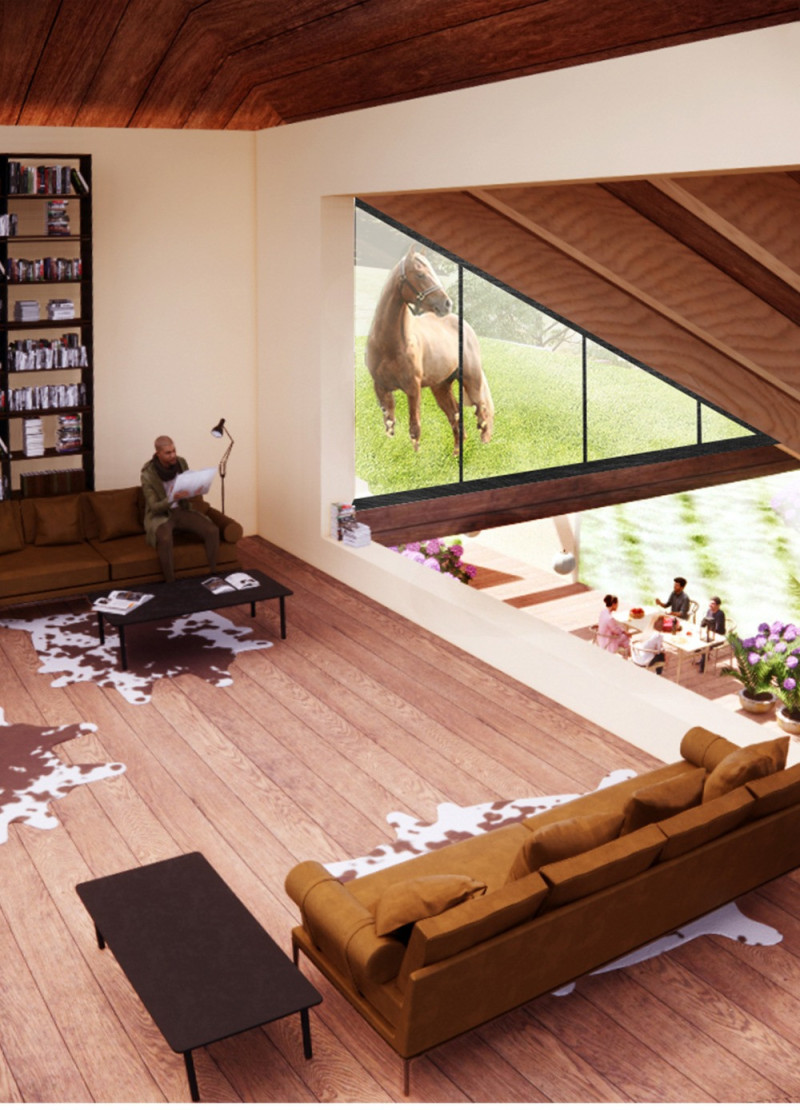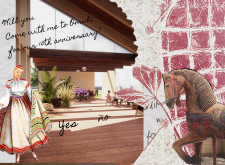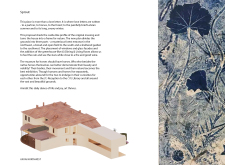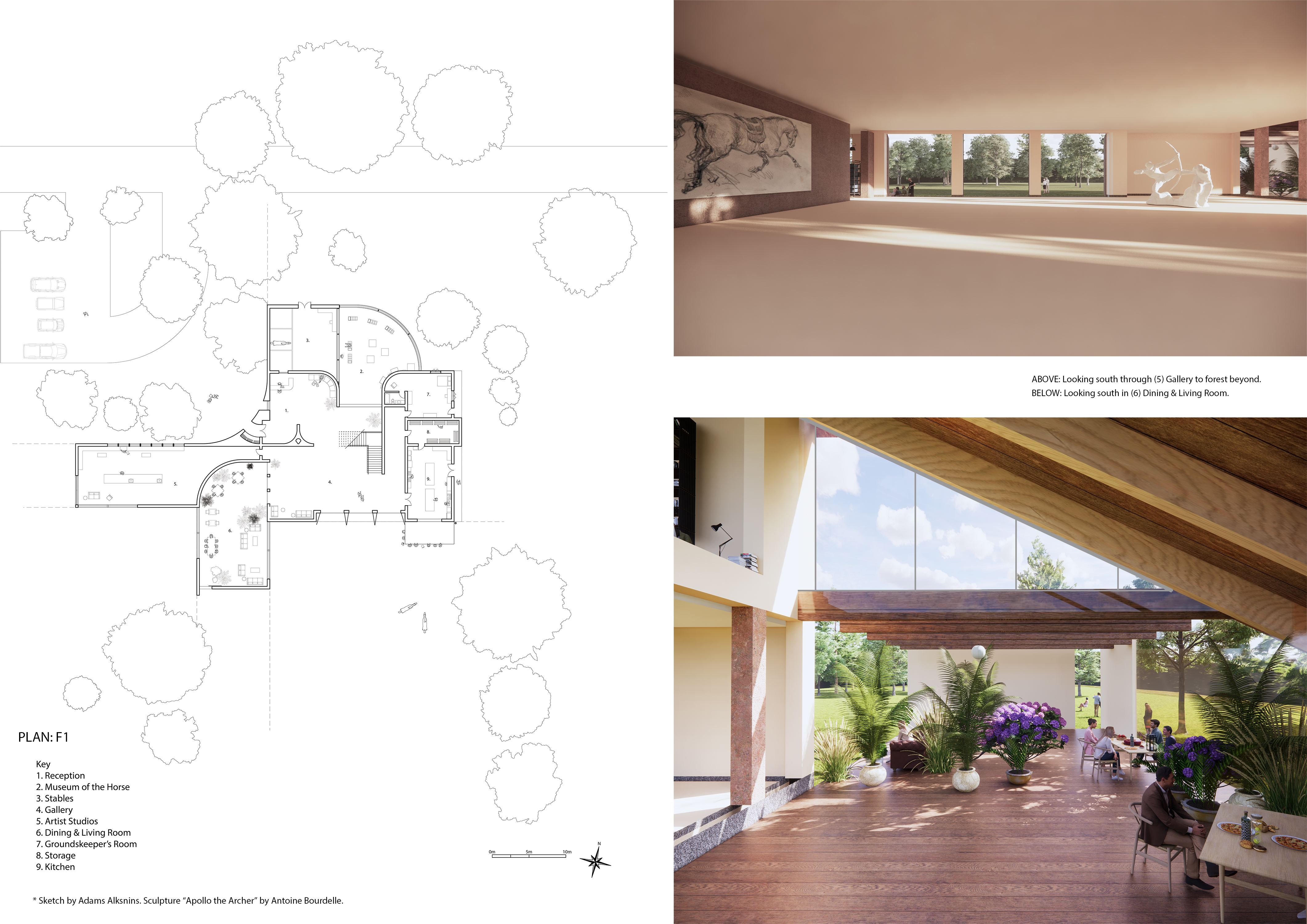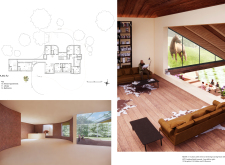5 key facts about this project
The design focuses on a thematic exploration of nature and the significance of horses in Latvian culture. This connection informs not just the aesthetics but also the spatial organization, where the layout facilitates movement and interaction among various functional zones. The project encourages communal engagement while providing private areas for individual reflection and creativity.
Unique Design Approaches to Cultural Engagement
One distinguishing feature of "Spout" is its robust engagement with the surrounding landscape. By incorporating large glass facades and operable windows, the architecture fosters a continuous dialogue between indoor and outdoor spaces. This approach not only enhances natural lighting but also creates panoramic views that immerse visitors in the scenic beauty of Latvia’s terrain. Additionally, the central greenhouse-like area serves as both a social hub and a physical connection to nature, promoting well-being and interaction among occupants.
The museum component highlights the importance of equestrian heritage, showcasing artifacts that celebrate the bond between horses and humans. This focus on cultural representation sets "Spout" apart from other regional projects, offering a narrative that is both informative and inspiring. By merging exhibition spaces with functional areas, the project promotes a seamless experience where visitors can engage with local history while participating in artistic processes.
Materiality and Sustainability
"Spout" employs a carefully selected material palette that emphasizes local resources, ensuring that the architecture resonates with the regional context. Predominantly constructed from wood, along with local stonework and glass, the materials reflect a commitment to sustainability. The wooden structures not only provide warmth and comfort but also align with environmentally responsible building practices by utilizing resources readily available in the locale.
The integration of artist studios within the facility encourages collaboration and innovation. These spaces are designed to be flexible, adapting to various artistic needs and practices. This layout enables an interaction between visitors and artists, fostering a climate of creativity that encourages participation in the artistic process.
Exploring architectural plans and sections can provide additional insights into how the project achieves its goals of cultural representation, functionality, and sustainability. Analysis of the architectural designs reveals how space and material choices contribute to the overarching theme of connection with nature.
Interested readers are encouraged to delve into the architectural elements and ideas presented in "Spout" for a deeper understanding of the project’s design principles and cultural significance. By reviewing the architectural plans and sections, one can appreciate how this project embodies a thoughtful approach to architecture, functionality, and sustainability.


